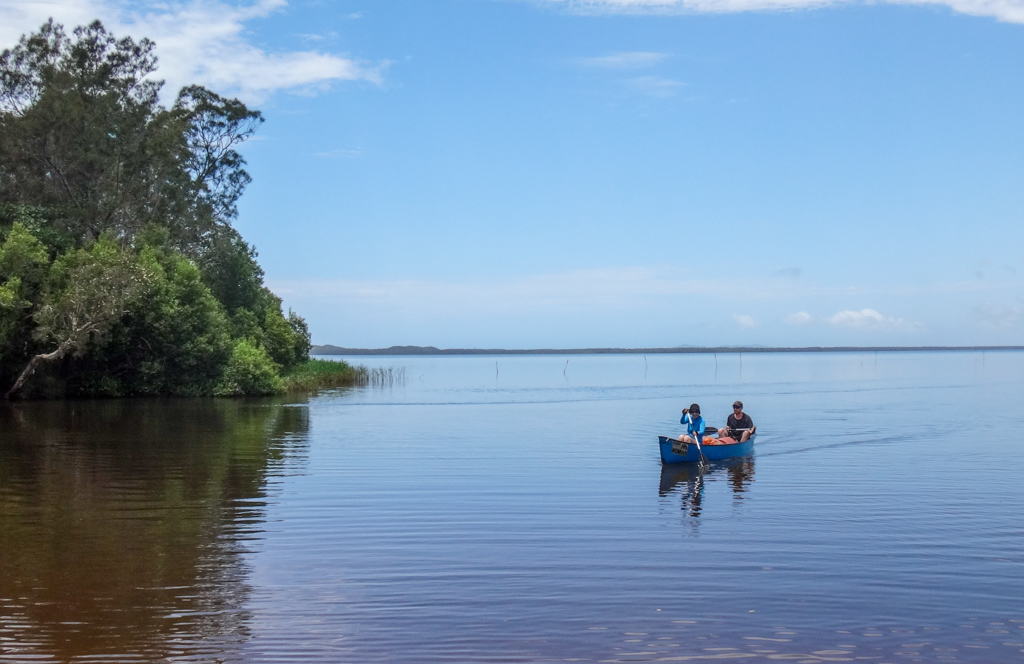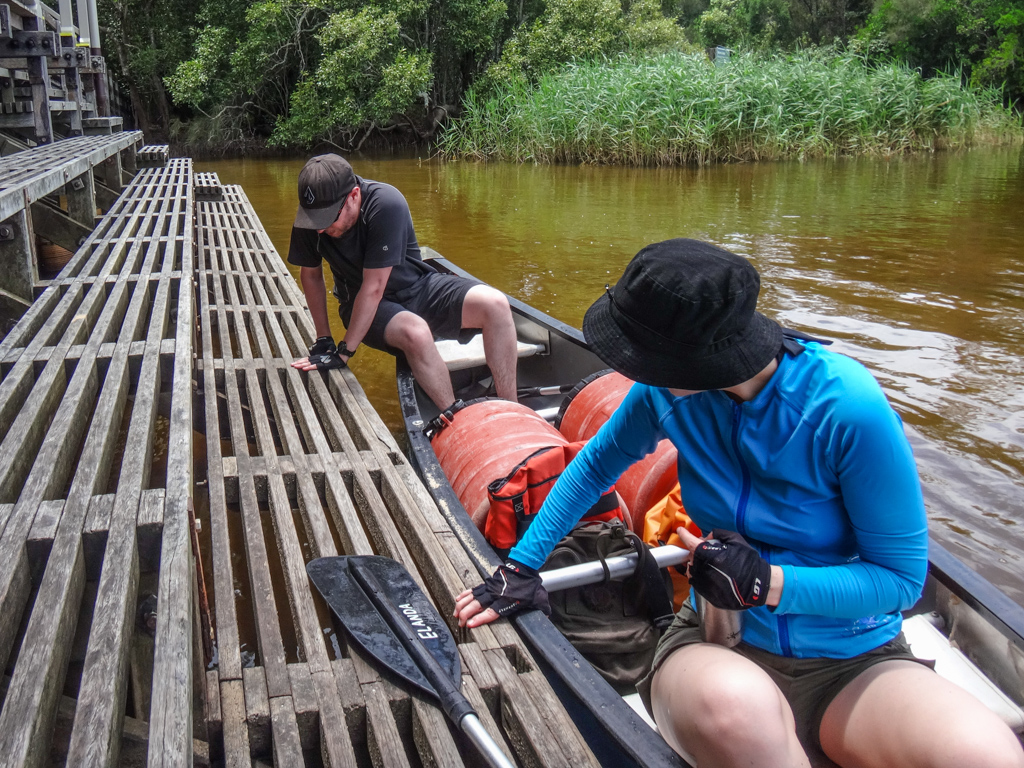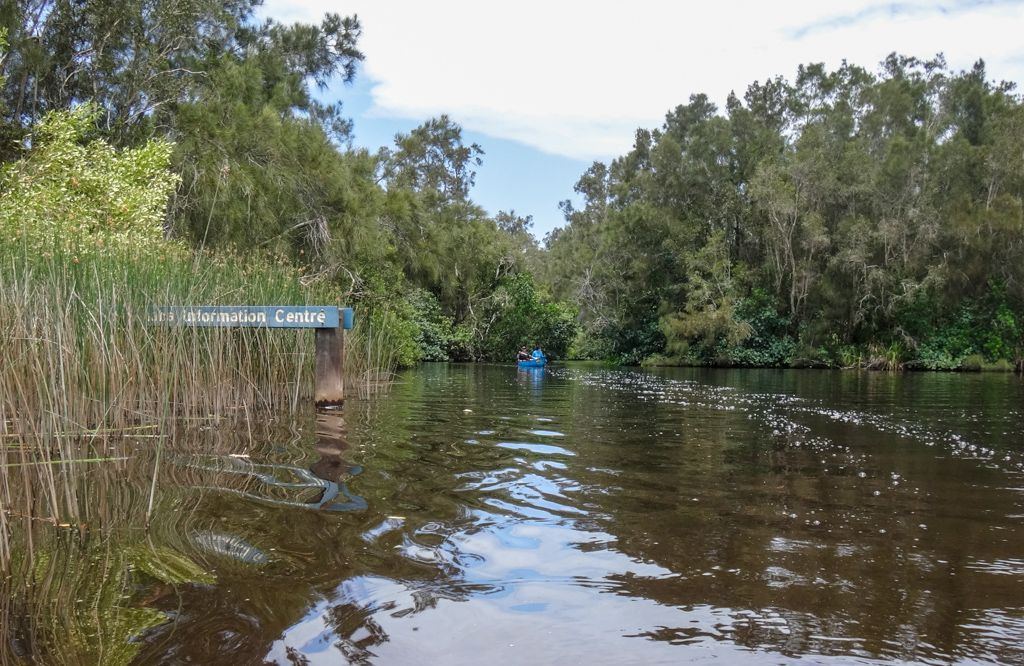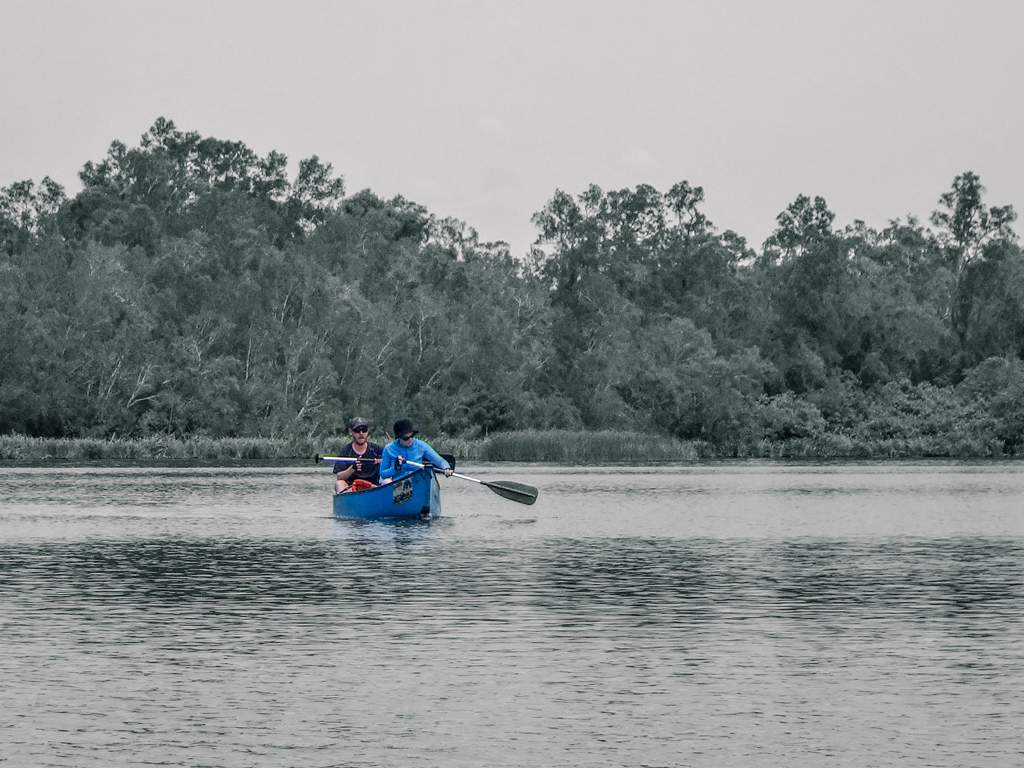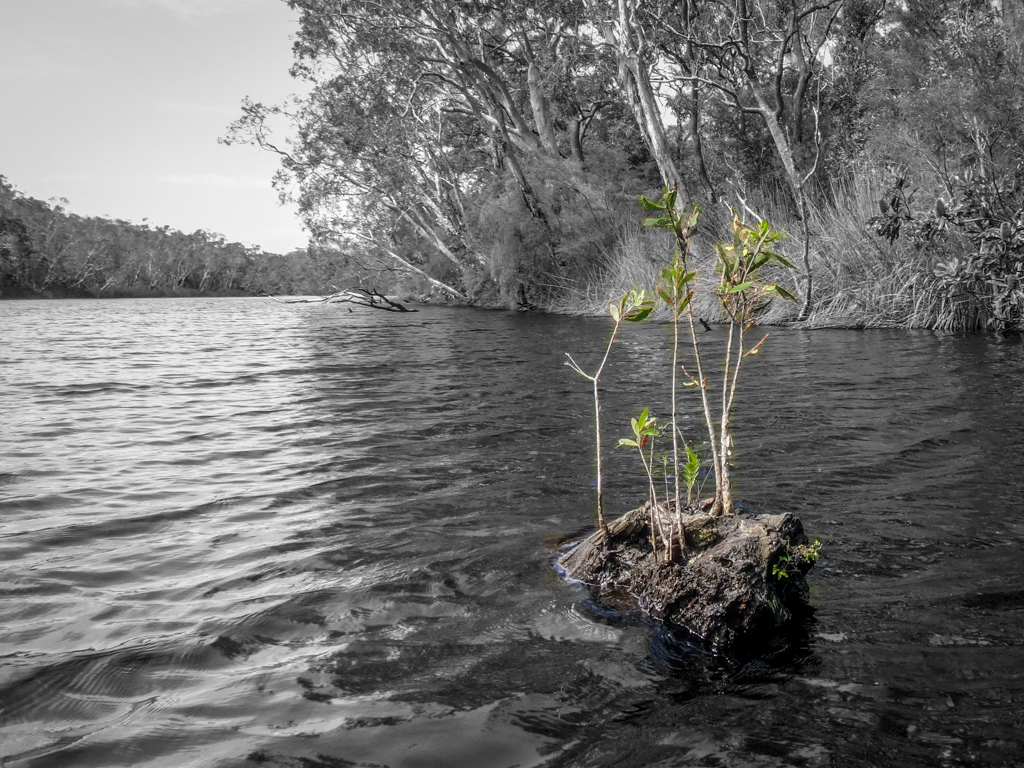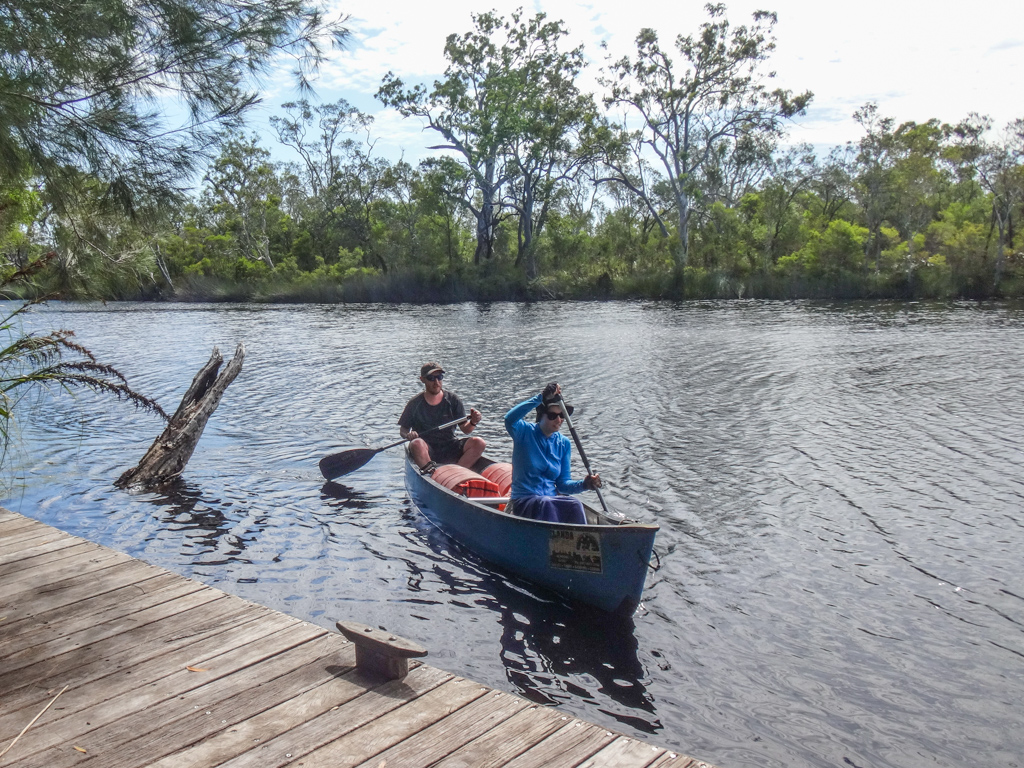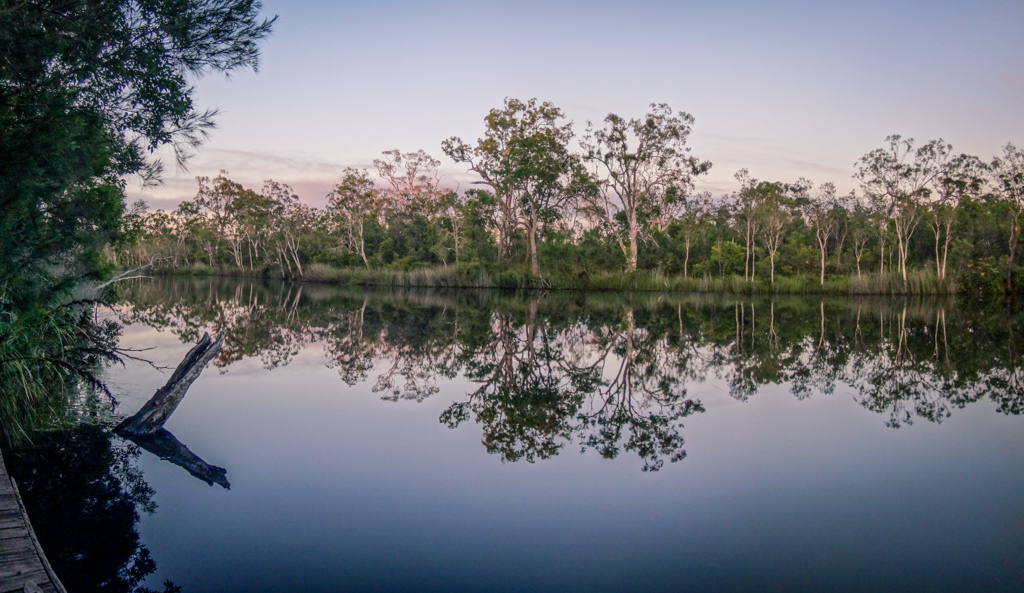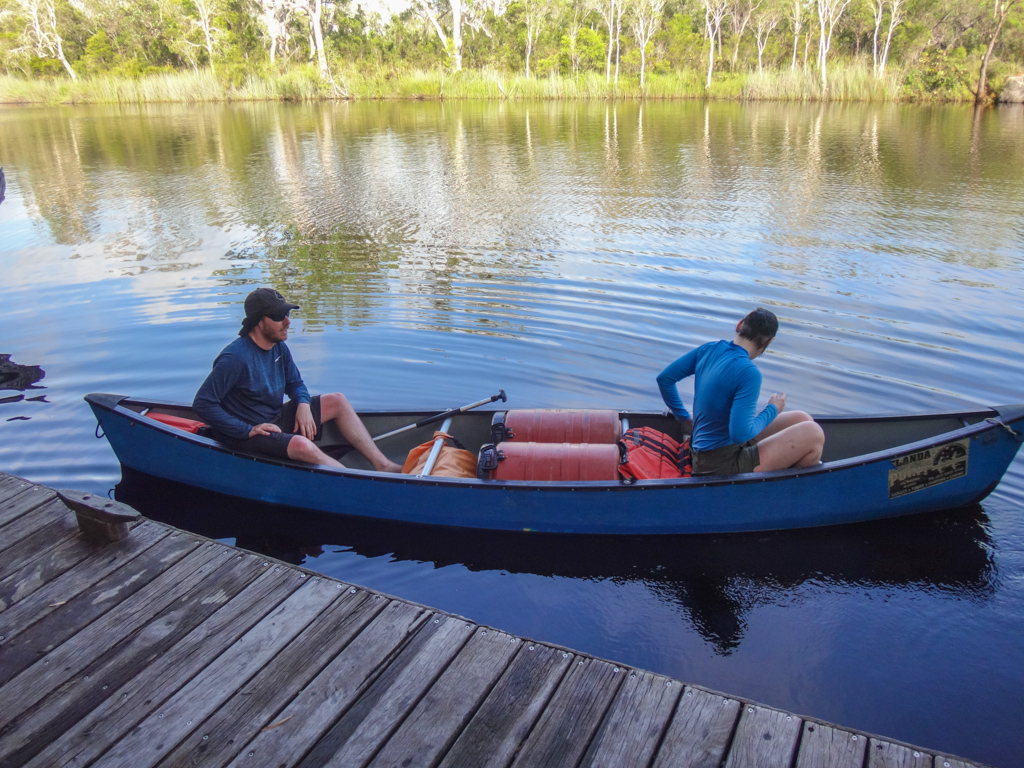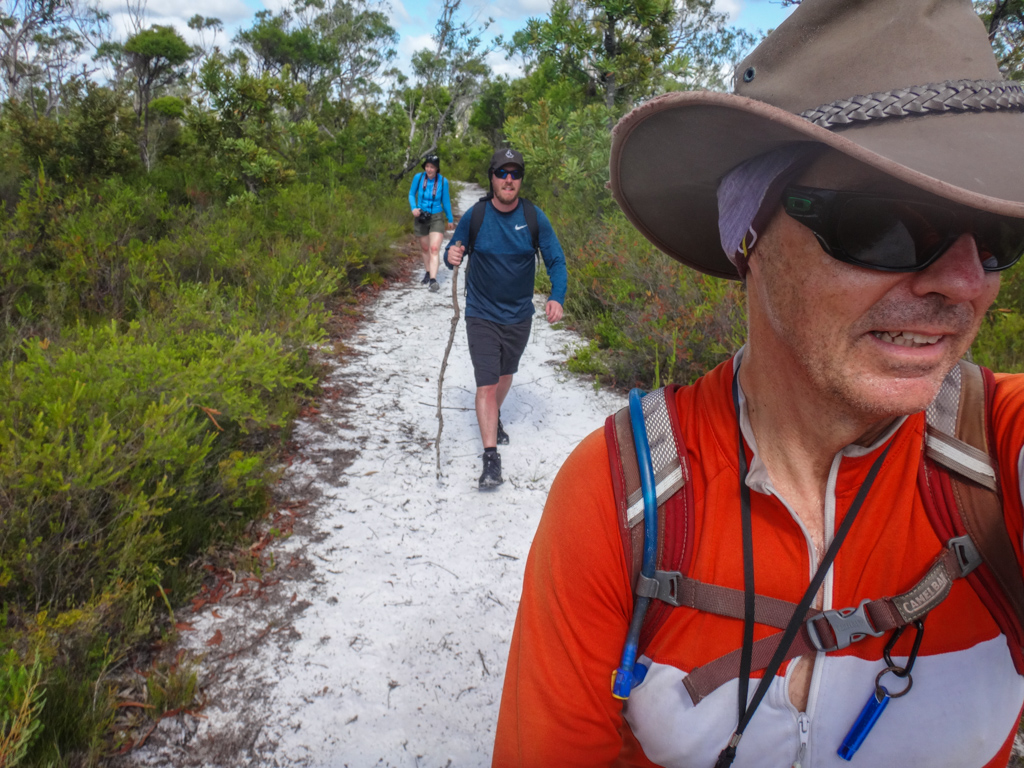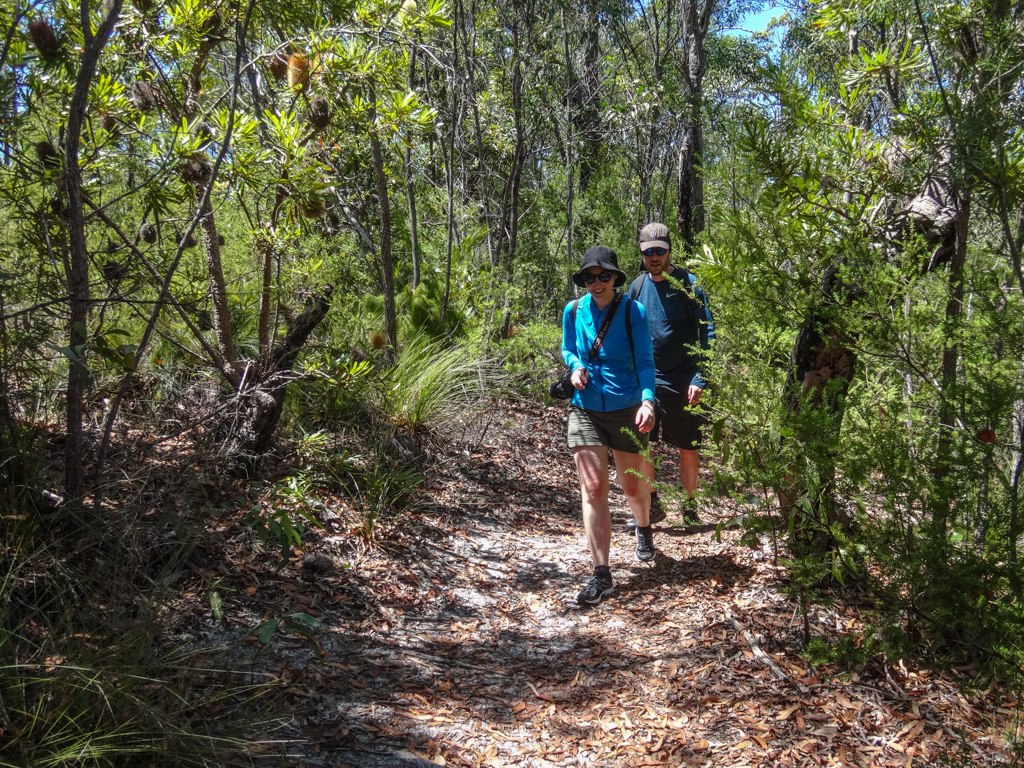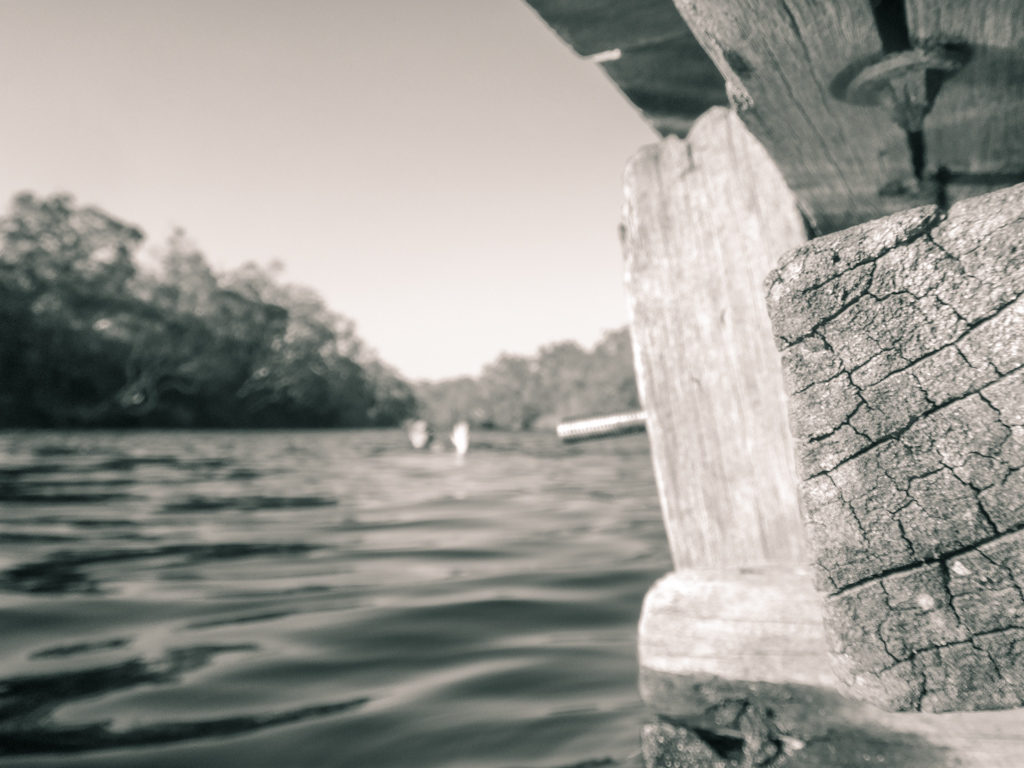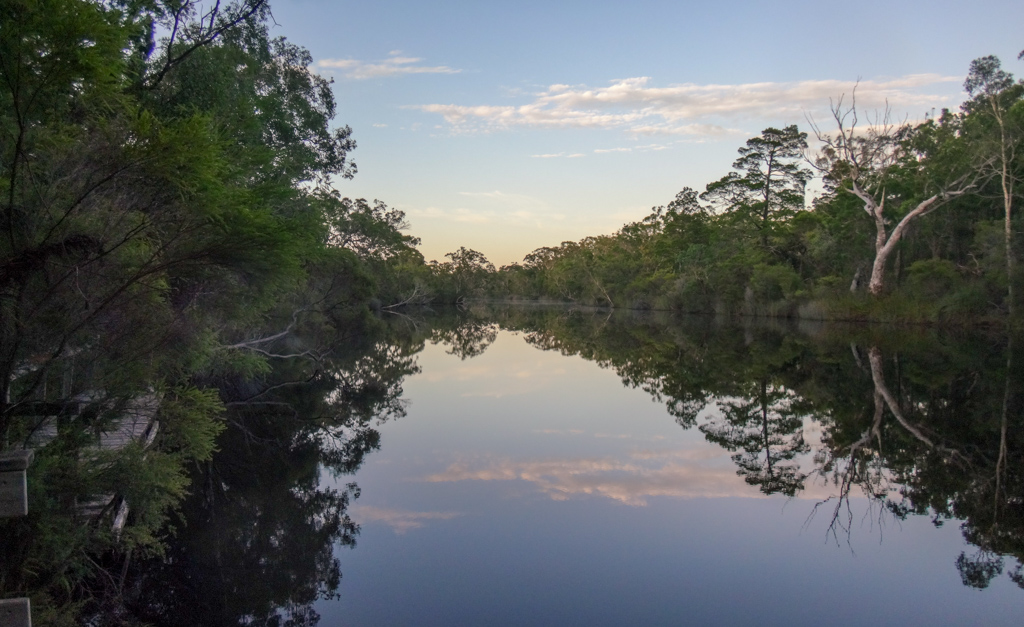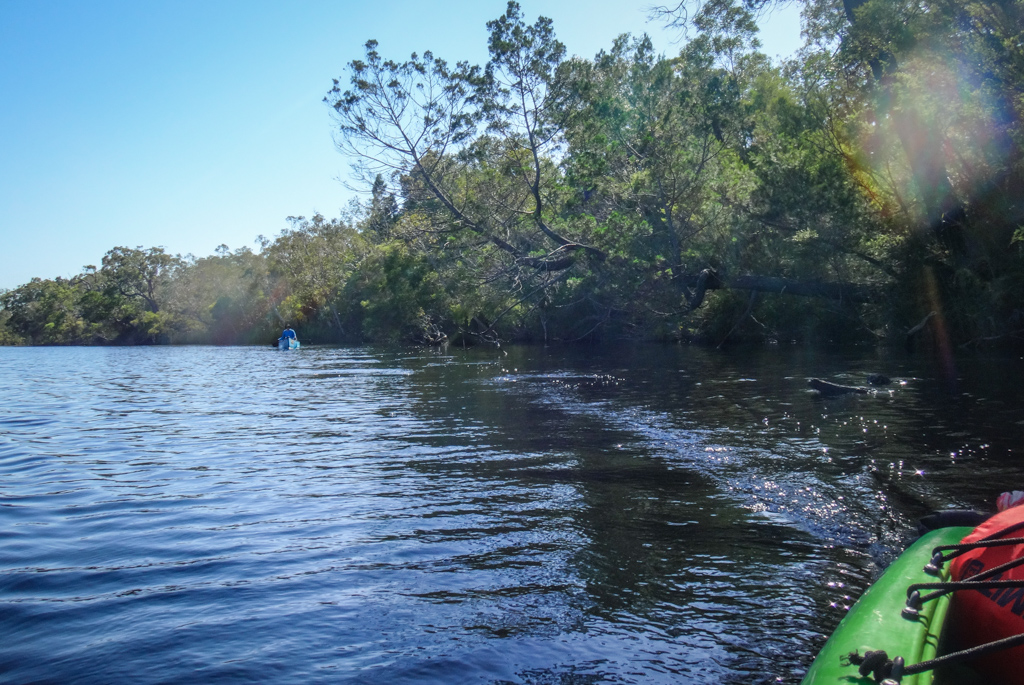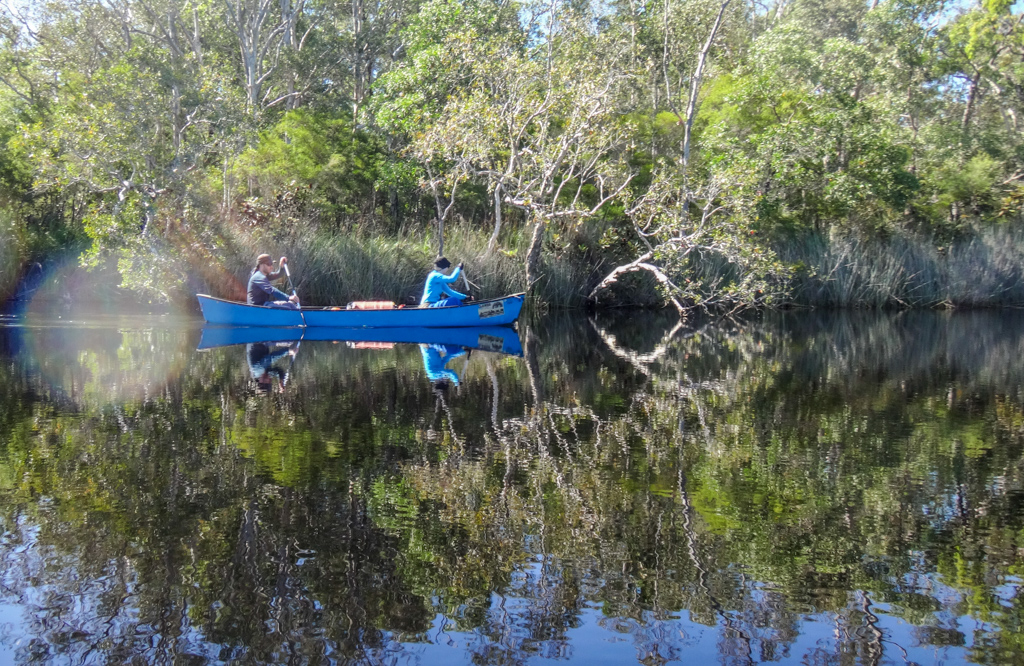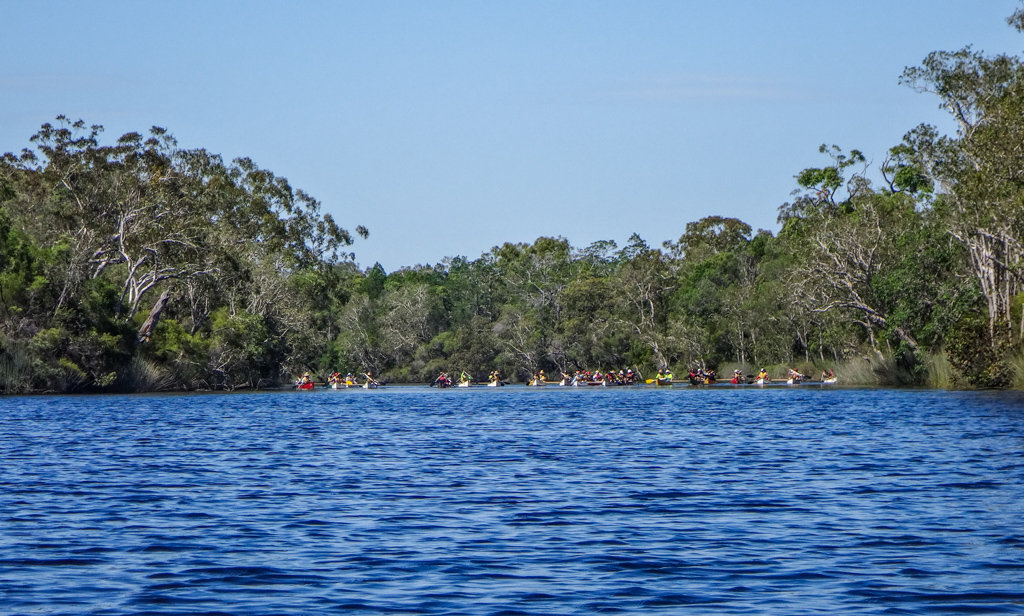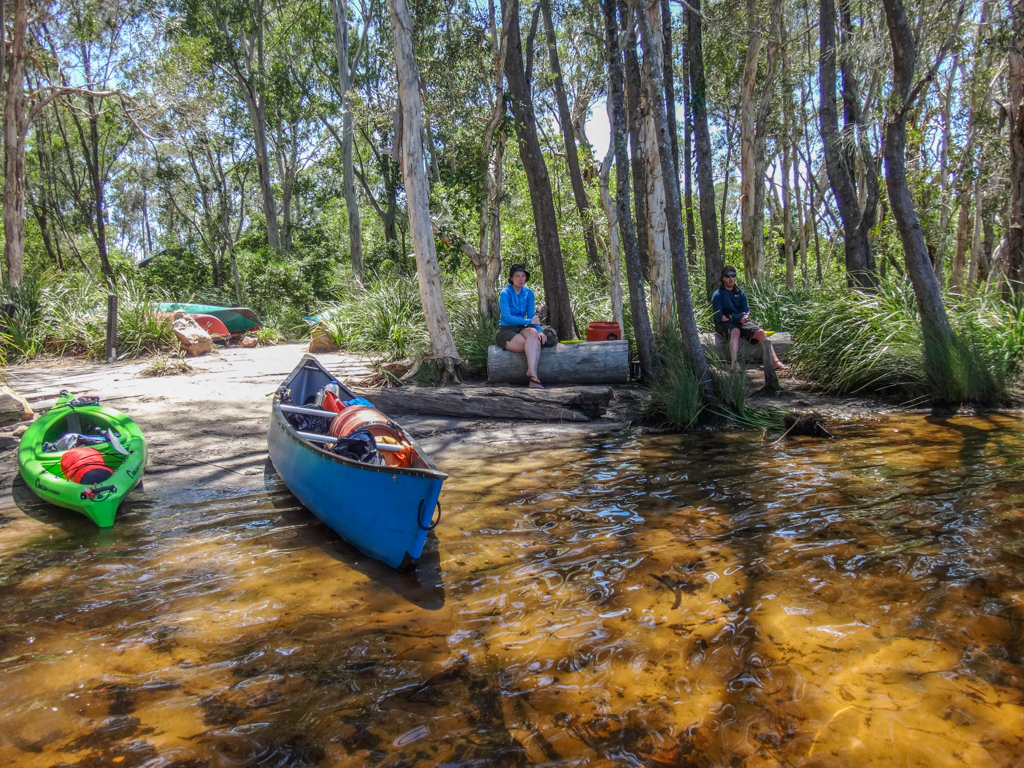
“What’s a special place to which I can take overseas visitors for a memorable adventure?”
While I asked myself the question, several locations flashed through my mind. The Noosa River was near the top of the list.
Day 1.
We bundled most of our gear into a couple of barrels aboard a two-person canoe that we hired at Elanda Point. I also brought a small kayak which didn’t have much room for anything except me.
After some furious double-checks (“Have I got this? Did we remember that?”) we scrambled aboard and started paddling across Lake Cootharaba.
I quickly learned that Kayaks travel faster than canoes.
After five minutes I turned around and realized I’d left Laura and Ken a long way behind; so I slowed down to let them catch up.
After almost an hour of paddling into the wind, we reached the other side of the lake, and decided to take a break.
We tied the boats up at Kinaba Information Centre and had a light snack.
I immediately noticed how easy it was for Laura and Ken to get in and out of the Canoe, but how clumsy it was for me to climb out of the kayak.
Cootharaba is over ten kilometres across. As I relaxed on the stairs at Kinaba I gazed across the flat water to mountains and hills on the distant shore.
After a brief rest, we re-boarded our boats and started paddling up the river.
This section of the Noosa River, to the north of the lake, is known as “The Everglades”. The shores are lined with thick swampy forest and marshlands.
The river narrowed.
I yelled out to a couple of shirtless German Tourists:
“Hey you’re going to get sun burned!”
“Ah, no!” they replied as they floated past.
It was now three hours since we had started paddling.
The canoeists’ arms were growing weary…
We stopped for another quick break at Harry’s Hut.
After hoisting the heavy “food” barrel out of the canoe, we rummaged around for some flat bread and cheese to take the edge off our hunger.
Ken thought the flat wooden deck made an excellent bed.
Not long to go now.
We slowly paddled the final couple of kilometres upstream to Campsite 1.
Made it!
It was a relief to scramble ashore on the deck at Campsite 1, knowing we’d finished for the day.
We unloaded the boats, set up camp, and enjoyed a glass of wine.
We were alone in paradise.
The sun sank to the horizon, birds called out, water lapped peacefully on the shore, and the occasional mosquito whined around our faces.
This was perfect.
Total climbing: 1150 m
Average temperature: 36.3
Total time: 04:21:04
More data
We paddled about twelve kilometres in just over four hours.
The first hour on the lake was the most difficult because of the wind on the exposed water.
After that, our progress was much easier.
I’ll rate this section 6.5 out of 10 on the tough-o-meter.
Day 2.
We went to bed early, and awoke with the sunrise.
The river was a mirror in the early morning.
We packed the boats and prepared to set off up river.
I tried to climb into my kayak from the jetty, but it tipped and I fell into the river.
While I tried to get in a second time, Ken and Laura manoeuvred their canoe next to my kayak to hold it steady. That worked.
Today we would only paddle a short distance upstream to Campsite 3.
The bulk of our efforts would come on foot afterwards
It took us about an hour to get to Campsite 3.
We pulled the boats ashore, and changed into our hiking gear.
It’s a six kilometre walk along a narrow sandy track to the Cooloola Sandblow.
We estimated it would take us about an hour and a half to reach the top.
It did, but we didn’t realize how hot the day would be.
We shared our water around to make sure no one ran out.
We eventually reached the sandblow, and skirted around the edge to find a vantage point with a good view.
It’s vast.
On one side we could see the intricate network of lakes, creeks and river that comprised the Everglades.
On the other side was the dark blue ocean.
We stood in the middle, baking in the hot summer sun, and enjoyed the panorama.
As the sun climbed higher in the sky, we turned around and made our way back to the campsite.
It was hot, but we made quicker progress because the track was mostly downhill.
We arrived back at camp around noon, and wasted no time jumping into the cool river.
Ahhh. Perfect!
We climbed out, set up camp, had a quick lunch, then jumped back in again.
We repeated this process several times over the course of the afternoon.
As the afternoon shadows lengthened, I sat on the jetty with my feet in the water.
There was nothing else to do. No mobile phone reception, no TV, no chores that needed doing.
I just sat and soaked it up.
For someone accustomed to being busy and “occupied with tasks” this was a novelty.
I loved it.
Total climbing: 904 m
Average temperature: 32.1
Total time: 04:30:27
More data
We paddled and hiked about fourteen kilometres in about four and a half hours, including an hour of hiking uphill in the hot sun.
I’ll rate this section 7.5 out of 10 on the tough-o-meter.
Day 3.
Our third day began like the one before: in peaceful solitude with mirror-like water under pastel-colored skies.
We hadn’t seen another person in over 24 hours.
It was time to begin our homeward leg.
We loaded up the boats and climbed aboard.
This time I didn’t fall in.
We set off downstream as the morning sun climbed slowly higher.
As we paddled, we tried to keep to the shady side of the river. It was more comfortable to paddle out of the sun.
As we floated downstream, I often let my kayak drift and looked around at the river gums and grasses on the shoreline.
Why didn’t I come here more often? It’s unbelievably picturesque.
The thin paperbark trunks, spiky river grass and dark water looked like a Jackson Pollock painting. I’m often amazed at how often I see this American painter’s artwork in the Aussie Bush.
Near Harry’s hut, a flotilla of boats appeared ahead.
Their canoes were bound together as outriggers: two hulls joined with two cross beams to make a wide and stable boat similar to what Pacific Islanders might have used several centuries ago.
We came ashore at Fig Tree point for a rest stop.
Of all the Noosa River camp sites, this is one of the easier ones to reach. It’s also one of the prettiest.
We paddled away from Fig Tree Point, through the mangroves….
…and out on to Lake Cootharaba.
Behind us lay the huge dunes we had stood atop yesterday.
Total climbing: 843 m
Average temperature: 32.8
Total time: 04:20:59
More data
It took us just over four hours to paddle sixteen kilometres downstream to our starting point.
This was the easiest section of our trip.
I’ll rate it 5 out of 10 on the tough-o-meter.
The upper Noosa River is idyllic: peaceful, picturesque, remote.
It’s good food for the soul, and a place to which I’d continually like to return.
Thanks, Laura and Ken, for sharing it with me.





